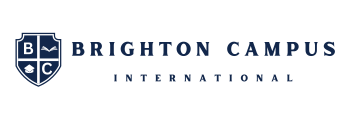Canada Student Visa
Make your Canadian dream come true with us.
Why should I study in Canada?
Firstly, Canada’s reputation as a safe and stable country is a significant factor.
Secondly, the high-quality education system. Known for its excellence and diversity, the Canadian education is a major draw.
Lastly, Canada’s inclusive and tolerant society plays a pivotal role in the decision-making process.
Moreover, international students in Canada are focused on building their future. A notable 72.5% intend to apply for a post-graduate work permit, enabling them to gain essential work experience. In addition, 60% express a desire to settle in Canada permanently, underscoring the country’s strong appeal not just as a study destination, but as a place to build a successful life. With its inclusive atmosphere, highquality education system, and wide range of opportunities, Canada continues to attract students from around the world like never before.

1. Check your eligibility:
Ensure you meet the eligibility requirements for a Canadian study permit. You will need:
- an acceptance letter from a DLI
- proof of financial support
- supporting documents (varies depending on your countries of citizenship and residence)
2. Prepare your application:
Once you meet all the eligibility criteria, you can begin preparing your study permit application. Ensure that you have collected all the necessary documents specific to your country. If you fail to demonstrate that you meet the requirements, your application could be refused by an immigration officer. To increase your chances of success, it’s advisable to have your application reviewed by a qualified immigration professional before submission.
3. Submit your study permit application:
You have two options when submitting your application:
Submit an electronic application: Create an account on the Immigration, Refugees and Citizenship Canada (IRCC) website. You can submit an application electronically using scanned or electronic copies of documents.
Submit a paper-based application: Gather hard copies of your documents and mail them to the Visa Application Centre (VAC) assigned to your country.
4. If your study permit is approved, come to Canada!
You do not receive your Canadian study permit until you arrive at a Canadian Port of Entry (POE). If your permit is approved, the Canadian government will issue you a Port of Entry Introduction Letter. You must show this letter to the immigration official when you arrive in Canada to get your study permit.
Pathway Programs
Students planning to study in Canada may begin with a prerequisite or preparatory program to better equip themselves for their primary academic program. These pathway programs often involve language training, allowing students to meet the language requirements of their main program through course completion instead of a standardized language test. Typically, pathway programs are structured in two stages: the first stage — such as a language course — is known as the ‘pathway program’, while the second stage — such as a college diploma or a bachelor’s degree — is referred to as the ‘main study program’.
Types of Pathway Program
When a prospective international student receives a Letter of Acceptance from a Canadian Designated Learning Institution (DLI), the offer may sometimes be conditional upon demonstrating proficiency in English or French. In such cases, the student may begin with a language course as part of a pathway program and transition to the main study program upon successful completion. There are two types of language-based pathway programs:
Standard:
In this type of pathway program, the student takes a language course with the goal of completing a recognized language proficiency test, such as IELTS or TOEFL, upon finishing the course. The program often includes test preparation components to help the student succeed.
Seamless:
Some receiving institutions have agreements with language schools to accept students who have finished the language course, without the requirement of recognized test results. This type of program is known as a seamless pathway program.
A Letter of Acceptance may be conditional on an international student completing an academic upgrading course. This is often required if the student hasn’t taken the necessary prerequisite courses or if their secondary education is not considered equivalent to Canadian high school standards. In such cases, the student must complete the academic upgrading course as part of a pathway program before advancing to the main study program.
To support a smooth transition between the pathway and main programs, many universities and colleges have established partnerships with language schools and other institutions. Typically, the pathway program is offered at a different institution than the main program, although in some cases, both may be delivered by the same Designated Learning Institution (DLI).
Pathway Programs and Study Permits
If the pathway program lasts more than six months, the prospective international student must apply for a Canadian study permit. For programs shorter than six months, a study permit is not required. However, in both cases, a Temporary Resident Visa (TRV) or an Electronic Travel Authorization (eTA) is typically still necessary to enter Canada. To determine whether you need a TRV or eTA, click here.
Once the student successfully completes the pathway program, they must apply for a new study permit for their main study program. This requirement applies to all students, regardless of the duration of the initial pathway program.
